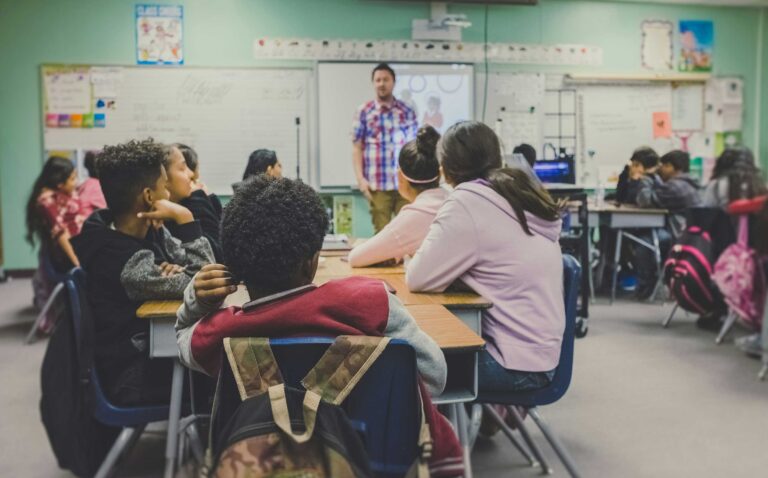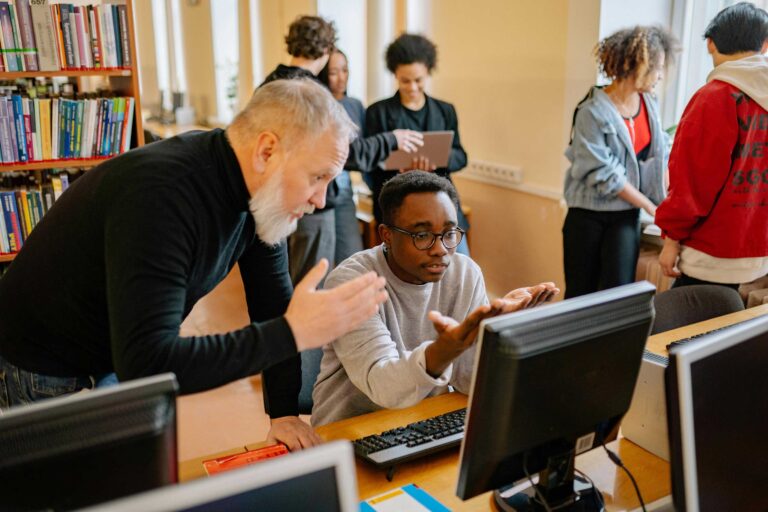Going back to school may come with some extra nerves this year, especially since the last two school years haven’t been normal. You’ll likely be back to full-time, in-person school again, and it may feel a little weird or scary. To have a successful school year, it’s important that you feel safe in your school and classroom.
WHY SAFETY MATTERS
If you are worried or afraid it can be hard to think about anything else. When you feel safe, you are able to explore and try new things, which makes learning possible. You spend most of your time at school and deserve to feel safe in that space.
HOW TO MAKE SURE YOU FEEL SAFE AT SCHOOL
BE PREPARED.
Sometimes the best way to feel safe is to prepare yourself for how to handle situations that scare you if they were to happen, rather than worrying about them. Talk to your parents or teachers so you can be clear about what the rules about masks are, what your school will do if there is a COVID-19 outbreak, and what to do in case of emergency situations. It can also be helpful to figure out who your friends in class are if you need to turn to someone.
IDENTIFY ADULTS YOU TRUST.
Feeling safe doesn’t just mean that you won’t get hurt; it means having people you trust that can support you. Think about an adult at school who knows you and can be your ally if you feel threatened—it could be a teacher, coach, guidance counselor, or even a cafeteria worker. This may be especially important for students of color or LGBTQ+ youth who may be searching for someone who can understand their experiences when other peers can’t.
TELL SOMEONE ABOUT YOUR WORRIES.
It’s hard to keep all of your emotions and worries inside and can often lead to more difficulty processing the situations that stress you out. Talking to someone can help you understand that you’re not alone and find ways to feel better. Sometimes just saying words out loud to a friend about what is worrying you can be all the relief you need. Other times it may be necessary to talk to a parent, teacher, or other trusted adult about what’s bothering you. If talking seems too hard, you can write a letter or an email.
KEEP A GROUNDING ITEM.
Grounding is a way of keeping your mind in the here and now and is a great way to help you feel safe and in control when your anxieties are spiraling. There are many ways to ground yourself, like breathing exercises or going for a walk. A grounding item is a physical object and can be a great way to help you feel grounded without leaving the classroom or distracting others. Some examples are a smooth rock you keep in your pocket, a fidget toy, a photo of a loved one or pet, or anything to hold onto that soothes you. Tell your teacher about your grounding object so they don’t think it’s a toy or distraction and take it away.
If you still feel overwhelmed, unsafe, and as though your fear affects how you function every day, you may be experiencing the first signs of a mental health condition, like depression or anxiety.
Take the Youth Screen at MHAScreening.org to see if you may be at risk. Once you get the results, MHA will provide you with more information and help you to figure out the next steps.
Safety stressors
After being home and doing school virtually for so long, here are some common things that you may be concerned about when physically returning to school:
COVID-19: The rules about when and where you need to wear a mask are different depending on where you live, and it can be confusing. Your school may or may not require masks to be worn, and with not everyone being able to get a vaccine, you might have concerns about getting sick, bringing sickness home from school, or going virtual again.
Bullying: One of the benefits of learning virtually was that you didn’t have to see bullies in person, so you may be worried about getting picked on again now that you’re back in a classroom.
Getting into trouble: Being back in school probably means being on a stricter schedule than you got used to while doing virtual school, so it might be hard to sit still for hours at a time or to keep your behavior under control. Your teachers may also get stressed as everyone gets used to being back in school and they may seem less patient or meaner than you remember. You may feel like only certain people get disciplined for misbehaving, or some get punished worse than others. If you are one of the people who seems to be in trouble more often or faces harsher discipline than others who do the same thing, it can be scary.
School violence: When no one was at school, there was no fighting in the halls and you stopped hearing about shootings or other acts of violence. Now that school is back in session, the possibility of violence has returned. Even though it seemed like you heard a lot about acts of violence at school before COVID, they aren’t as common as you think despite the amount of media attention they get. Talk to your teachers about procedures if you need to be reminded about what to do to stay safe.

